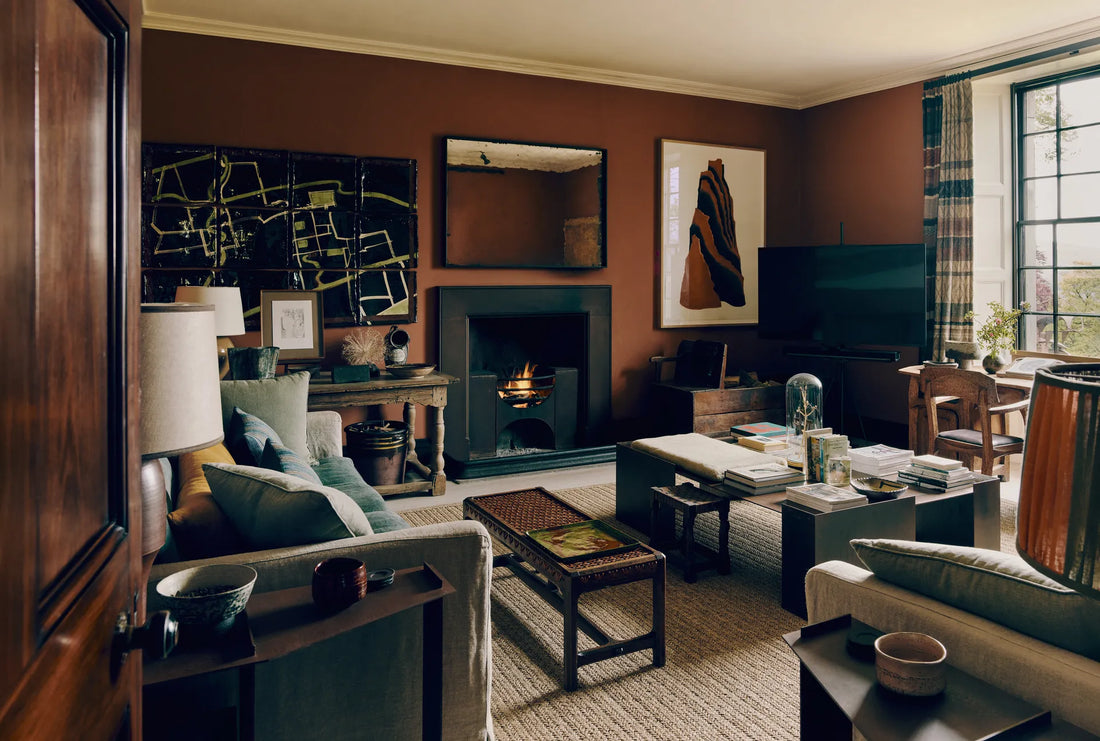
Why the Best Homes Have Nothing to Do with Trends
There’s a particular kind of house that stops you mid-scroll — not because it’s grand or minimal or drenched in Farrow & Ball’s latest shade of “Greige Ambiguity,” but because it feels alive. You can sense it instantly: the choices are personal, the patina is real, and nothing was done to impress anyone.
That, in short, is what makes a home stand out. Not the architecture. Not the color palette. Not the fact that it’s been “styled” within an inch of its life. What makes a home memorable is a deeply personal design ethos — when someone builds or shapes their space as an authentic reflection of how they live, think, and feel.
Take, for instance, a house tucked into the Yorkshire Dales — a Regency stone home reimagined by designer Jonathan Reed and artist Graeme Black. It’s stunning, yes, but not because it’s perfect. It’s because it’s personal. Every inch carries intention, restraint, and a touch of rebellion against sameness.
1. It Respects Its Past — But Isn’t Trapped There
Great homes don’t cosplay as history museums. They acknowledge their bones while building something relevant for now.
In this house, the designers didn’t erase the age spots or chase symmetry; they lifted old stone floors, relaid them with care, and added wings that made sense for their lives. It’s a renovation that whispers, “I see you, past, but I’m still moving forward.”
That’s the mark of a confident home: one that’s comfortable with evolution.

2. It Values Craft Over Flash
We’re in an era of instant everything — but the homes that hold our attention are the ones built slowly, deliberately. Here, nothing was “off the shelf.” Hardware was cast in bronze, furniture commissioned from artisans, and surfaces finished to feel touched rather than lacquered.
It’s not luxury in the conventional sense; it’s luxury in the way that linen wrinkles or stone softens. It’s the quiet confidence of something made by hand and meant to last.

3. It’s Artful — Without Trying Too Hard
When a space is truly personal, art stops being decoration and starts being dialogue.
In this home, paintings, tapestries, and ceramics don’t match — they belong. They’re part of the conversation between the land, the architecture, and the people who live there.

4. It Feels Connected to Its Surroundings
The best homes always talk to their setting. This one doesn’t perch above the moors like a showpiece; it nestles into them. Inside, natural materials echo the hillside outside — stone, linen, wood, bronze. There’s a quiet dialogue between inside and out, built on respect for the landscape rather than dominance over it.
That kind of harmony can’t be bought. It’s designed with intention — or, more accurately, lived into over time.

5. It’s Functional — But with Soul
There’s a fine line between utilitarian and soulful, and the sweet spot is where everyday rituals feel elevated.
A laundry room that’s calm instead of chaotic. A bath that feels collected instead of staged. Even a light switch that’s satisfying to touch. Those small, unseen details make a home work for you instead of just performing for others.

The Takeaway
Homes like this Yorkshire one are rare not because they’re expensive or exclusive — but because they’re deeply considered. They remind us that design isn’t about imitation or trend-chasing; it’s about translation. Translating how you live into a language of space, texture, and light.
A house can be beautiful without being personal, but it will never be memorable.
And in the end, that’s what sets great design apart: it’s not just curated — it’s felt.
-Juliette

